*NURSING > QUESTIONS & ANSWERS > NBCOT Exam Study Guide. 100% comprehension. Graded A+. 170 Questions with rationale answers, rated A (All)
NBCOT Exam Study Guide. 100% comprehension. Graded A+. 170 Questions with rationale answers, rated A
Document Content and Description Below
NBCOT Exam Study Guide - Ans-NBCOT Exam Study Guide Practice Test (170 Questions) - Ans-Practice Test (170 Questions) A patient in the early stages of amyotrophic lateral sclerosis (ALS) presents wi... th weakness in the thenar eminence. During which ADL task would the evaluating OTR® MOST LIKELY observe the effect on function? A. Transferring from the bed to the bedside commode B. Taking a sip from a glass of water C. Reaching overhead to don a T-shirt D. Squeezing toothpaste onto a toothbrush - Ans-Solution: The correct answer is D. Typical early signs of ALS are distal, with weakness of the small muscles of the hand being the most typical initial symptom. The muscles that make up the thenar eminence are responsible for opposition of the thumb. Squeezing toothpaste and holding a toothbrush require grasp-and-pinch patterns that involve thumb opposition. A: Transferring from the bed to the bedside commode is not the best answer because performing a transfer puts more emphasis on the lower extremities and trunk muscles versus the distal, small muscles of the hand. B: Although sipping water from a glass involves grasp, the thumb is more abducted in this position.C: This approach is incorrect because it involves more proximal musculature. The OTR® is working on a task-oriented gardening activity with a small group of adolescents in an inpatient mental health setting. One of the participants becomes self-absorbed and distractible and has bursts of energy that are affecting the other members of the group. What is the OTR®'s MOST appropriate response? A. "How are we doing with our pot transfer? We need to get this done today." B. "Can I speak to you privately about your behavior during the group work?" C. "You seem to be distracting the other members of the group." D. "Please stop whatever it is you are doing." - Ans-Solution: The correct answer is A. When a client starts shows symptoms of a manic episode, particularly emotional and cognitive symptoms, it is best to help the client engage in goal-directed action. B, C, D: These responses serve to make the client aware of his or her behaviors but do not necessarily help the client return to meaningful task performance. A COTA® is working toward service competency for adaptive feeding equipment instruction. How would the OTR® BEST establish service competency? A. Review the COTA's documentation of multiple patients whose feeding impairments warranted adaptive equipment, then discuss the outcomes with the COTA. B. Observe the COTA educate clients on how to use adaptive feeding equipment to ensure that the COTA instructs clients in the same manner as would the OTR. C. Compare outcomes by rating the same client's performance with the adaptive feeding equipment at the same level of independence. D. Collect information from various sources, including other therapists, the COTA's documentation, and feedback from clients, to determine competency. - Ans-Solution: The correct answer is C. Service competency is defined as "the process of teaching, training, and evaluating in which the OTR® determines that the COTA® performs tasks in the same way that the OTR would and achieves the same outcomes" (Youngstrom, 2009, p. 943). In this example, both the COTA and OTR observethe same client performing a task and rate that performance in a similar manner. Comparing outcomes helps to ensure clients receive care of equal quality. A, D: These are indirect approaches to determining the COTA's skill, which is insufficient to establish service competency. B: The tasks do not need to be performed in exactly the same way, but the outcomes must be similar. An OTR® is performing family training with a client with Stage VI amyotrophic lateral sclerosis (ALS) who is preparing for discharge home. Which points are MOST IMPORTANT for the OTR® to address? A. Adaptive equipment for ADLs and how to set up the client with ALS to perform as independently as possible B. Energy conservation for the client with ALS, as well as caregiver support resources to prevent burnout C. Positioning to prevent skin breakdown, a ROM home program, and safe bed mobility and transfers D. Therapeutic exercises for the client with ALS and how caregivers can use proper body mechanics - Ans-Solution: The correct answer is C. A client with end-stage ALS would likely be totally dependent for all ADL and mobility, thus requiring major caregiver assistance for bed mobility and transfers. An OTR® instructing family members in these techniques would educate them on body mechanics. Positioning and ROM at this stage are important to prevent discomfort, contractures, and skin breakdown. A: A client with end-stage ALS would likely require total care for ADLs. B: Energy conservation is not appropriate because at this stage, the client would likely not be exerting extraneous amounts of energy. D: Therapeutic exercises are just one component of a home program. A COTA® working on an inpatient rehabilitation unit has had two patients fall in the past month. The supervising OTR® has concerns about the COTA®'s safety awareness during certain interventions. Which approach is the BEST for the OTR® to take to address these concerns?A. Speak with the rehabilitation manager about possible disciplinary action. B. Review the documentation of the two patients who fell and discuss their cases thoroughly with the COTA® to determine the causes of the falls. C. Ask the COTA® whether more thorough supervision is needed and then proceed to provide close supervision. D. Collaborate with the COTA® to determine potential causes of the falls and provide direct supervision with more deliberate feedback. - Ans-The correct answer is D. Supervision that is more frequent may be necessary when the OTR®, COTA®, or both determine that additional supervision is needed to ensure safe and effective delivery of occupational therapy services. In this case, safety is a major concern, and therefore additional supervision may be necessary. A: This unnecessary step would put the COTA®'s job at risk; more appropriate solutions exist before going to this type of extreme measure. B, C: These approaches offer more indirect supervision; moreover, C is not appropriate because whether the COTA® says yes or no, more supervision is warranted because of the OTR®'s safety concerns. An OTR® evaluates a client who has just entered the plateau phase of Guillain-Barré syndrome (GBS). When assessing ADLs, what would the OTR® most likely expect to see? A. Bowel and bladder incontinence, which affects skin integrity and toileting routine B. Unilateral sensory impairments, which affect fine motor tasks such as oral care C. Edema and weakness in the lower extremities, which makes bathing and dressing difficult D. Shoulder weakness, which results in decreased independence in upper-body bathing and dressing - Ans-Solution: The correct answer is C. In the plateau phase, symptoms are at their most severe: Edema and weakness are common symptoms with GBS. Because symptoms are typically symmetrical and ascend from distal to proximal, bilateral symptoms would likely affect lower-body self-care.A: ladder incontinence can be a symptom of GBS, but the bowel is not affected. Intervention with bladder incontinence may include creating a toileting schedule and frequent skin checks to avoid breakdown. B: Symptoms are typically bilateral and begin distally; clients with GBS often exhibit mild sensory loss in the feet and hands. D: Shoulder weakness may be an observed symptom; however, the most disabling symptoms are likely to be distal rather than proximal. An OTR® is assessing bed mobility with a client with Guillain-Barré syndrome (GBS) 2 weeks into the plateau phase. The patient reports dizziness on performing supine to sit at the edge of the bed and begins to lie back down. What step is MOST appropriate for the OTR® to take? A. Encourage the patient to remain upright and allow for the dizziness to subside by performing simple ROM exercises to promote circulation. B. Assist the patient back to bed safely, lower the head of the bed, and monitor vitals, comparing the current blood pressure with the resting blood pressure. C. Assist the patient back to bed slowly, elevate the lower extremities, and immediately search for the nurse to assess the patient. D. Educate the patient on the importance of sitting upright and out of bed to help regulate the nervous system and prevent secondary complications. - Ans-Solution: The correct answer is B. People with GBS are at risk for autonomic nervous system dysfunction such as postural hypotension or experiencing a significant drop in systolic blood pressure on [Show More]
Last updated: 1 year ago
Preview 1 out of 171 pages

Reviews( 0 )
Document information
Connected school, study & course
About the document
Uploaded On
May 25, 2022
Number of pages
171
Written in
Additional information
This document has been written for:
Uploaded
May 25, 2022
Downloads
0
Views
83














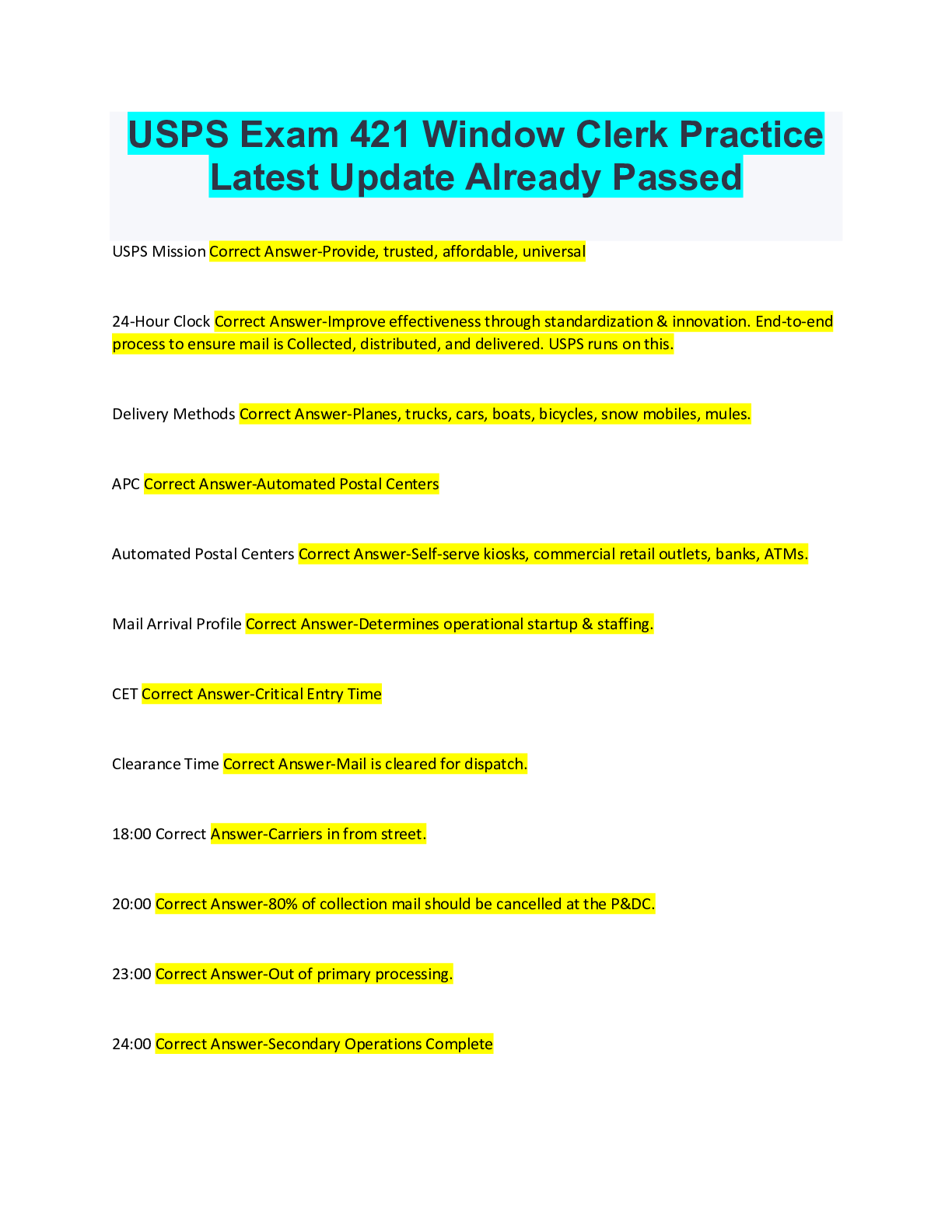

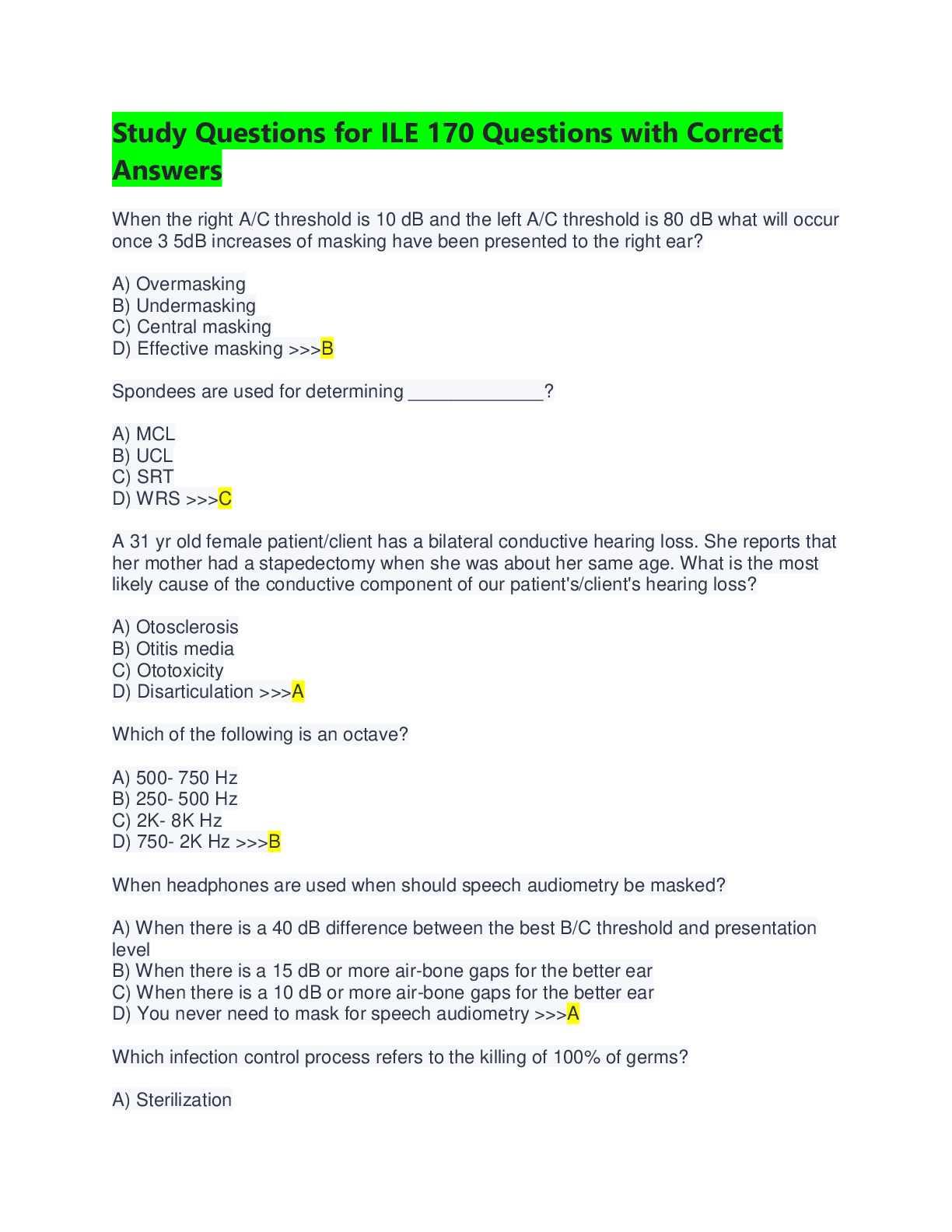

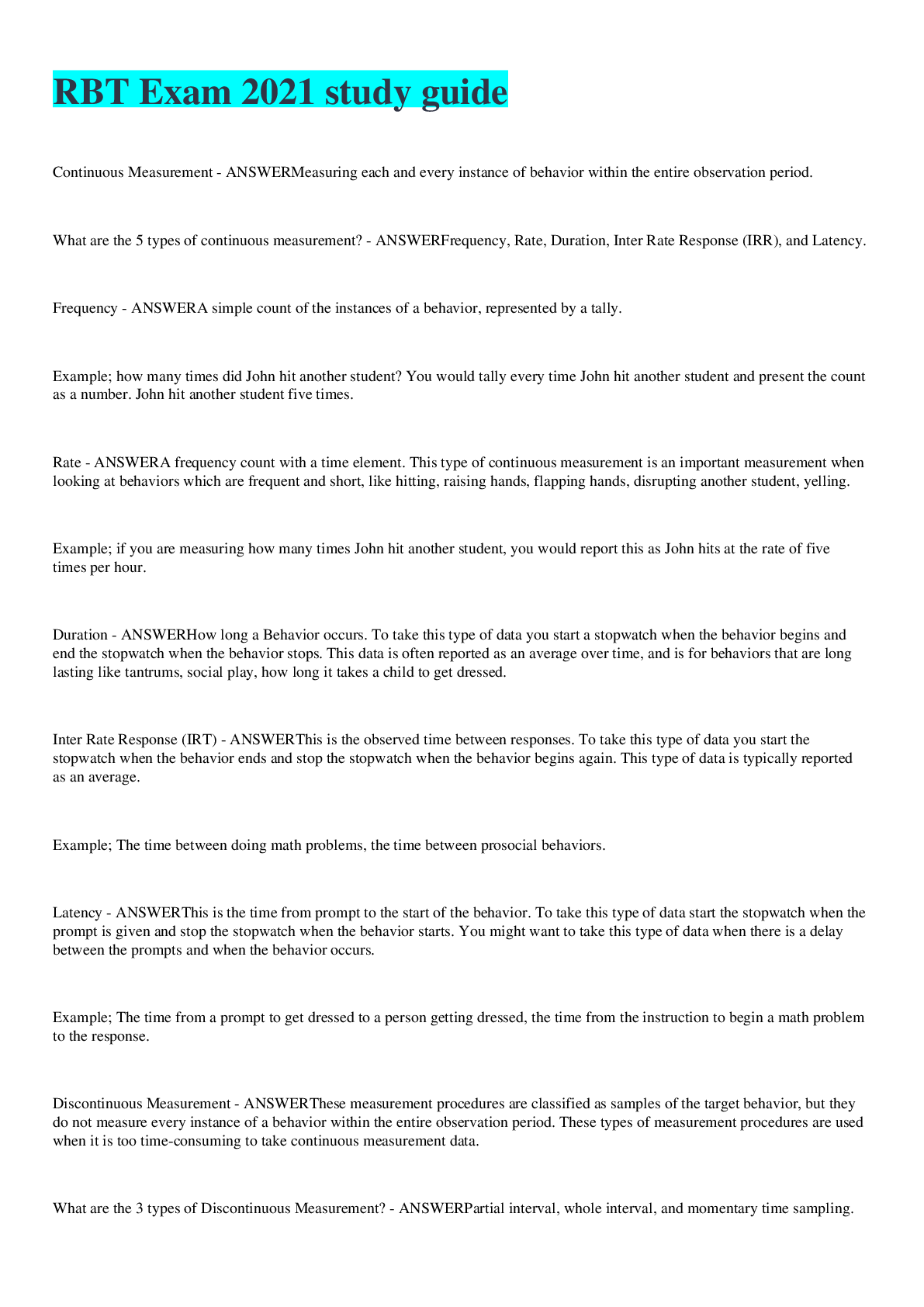
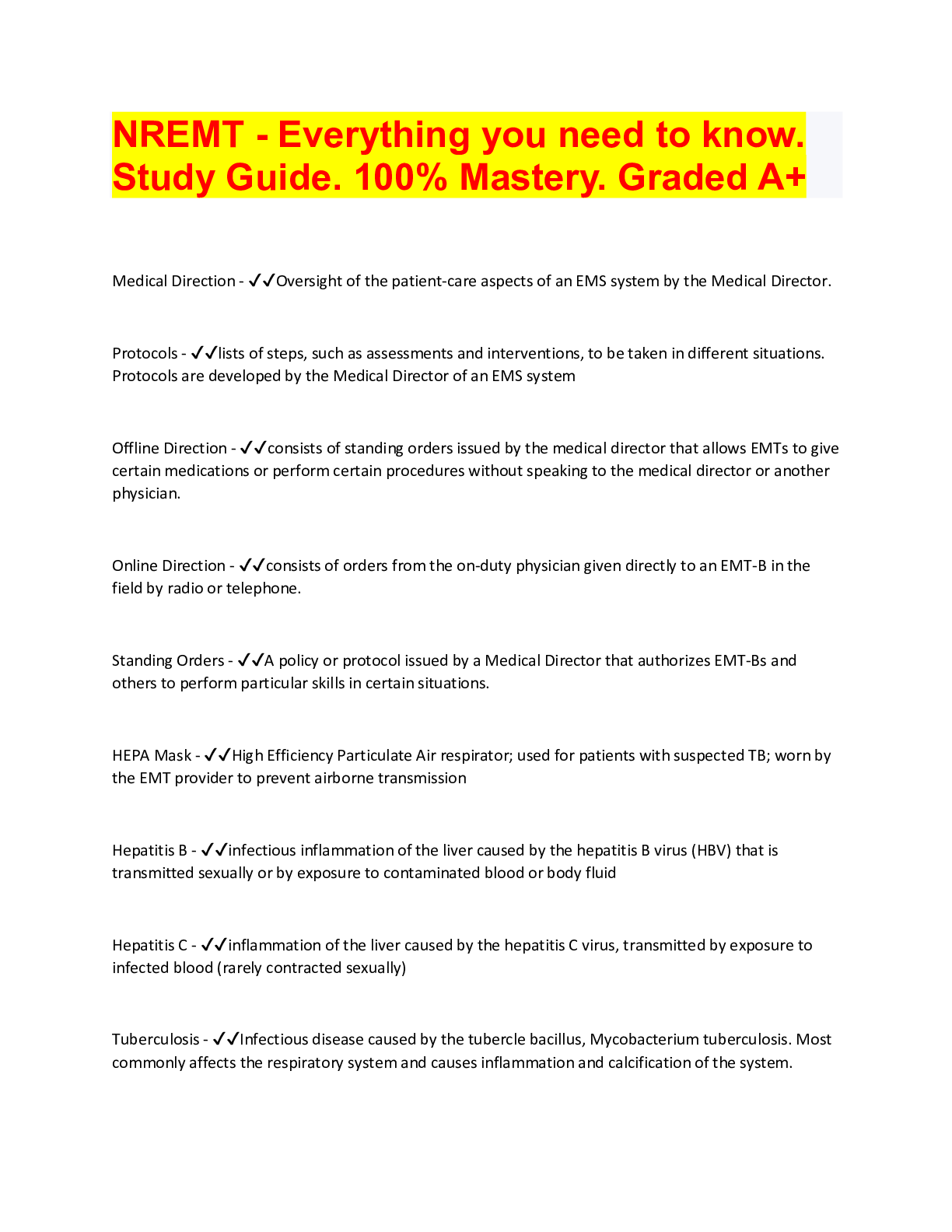
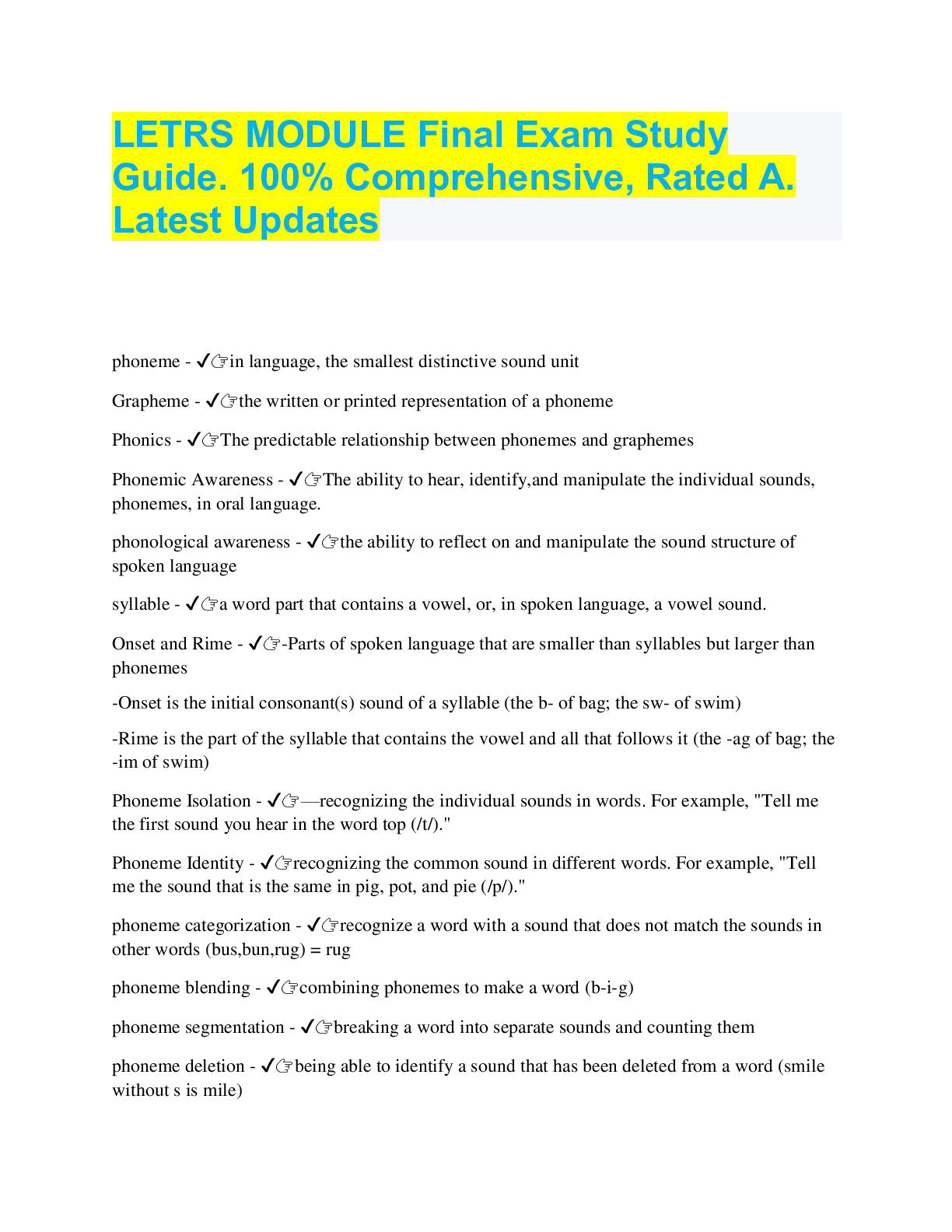

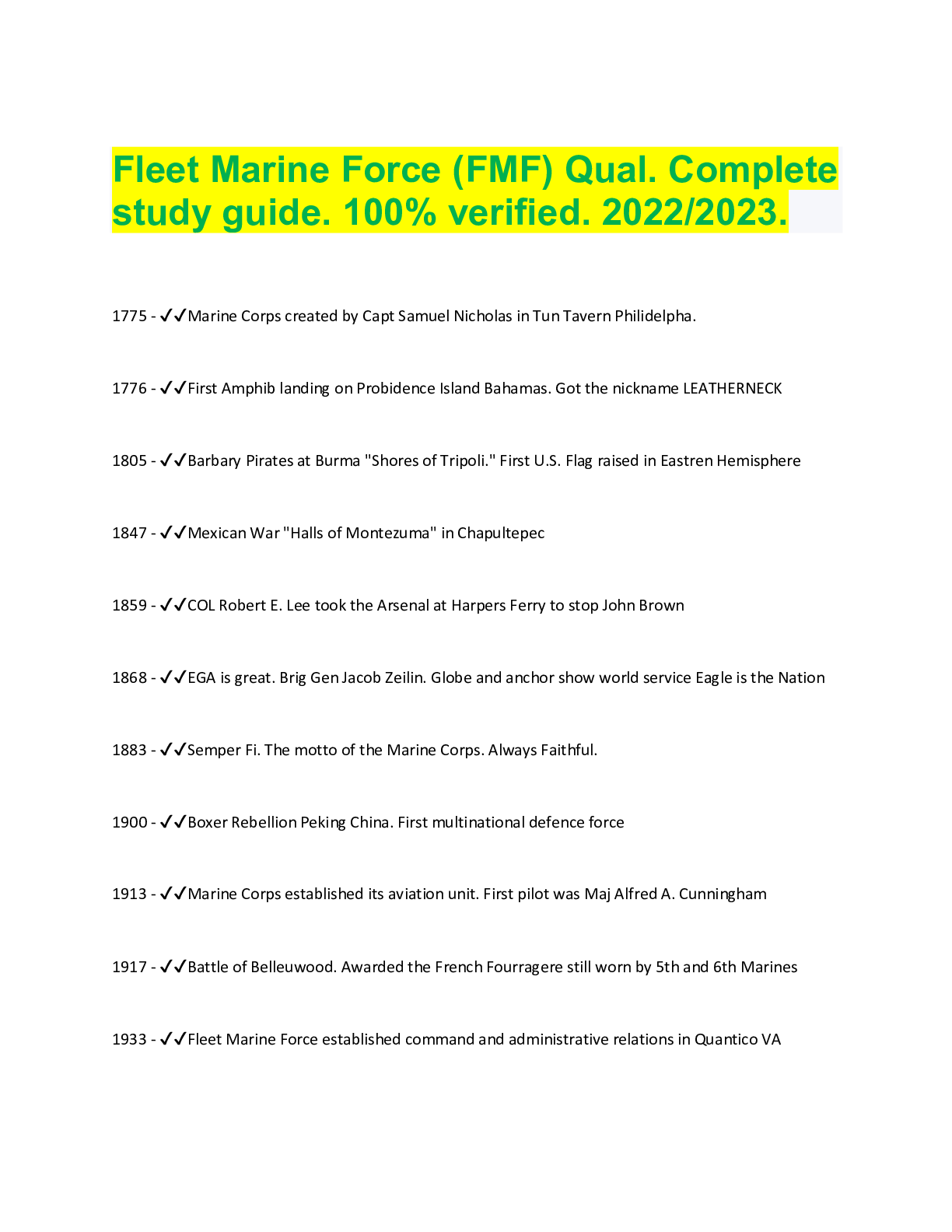
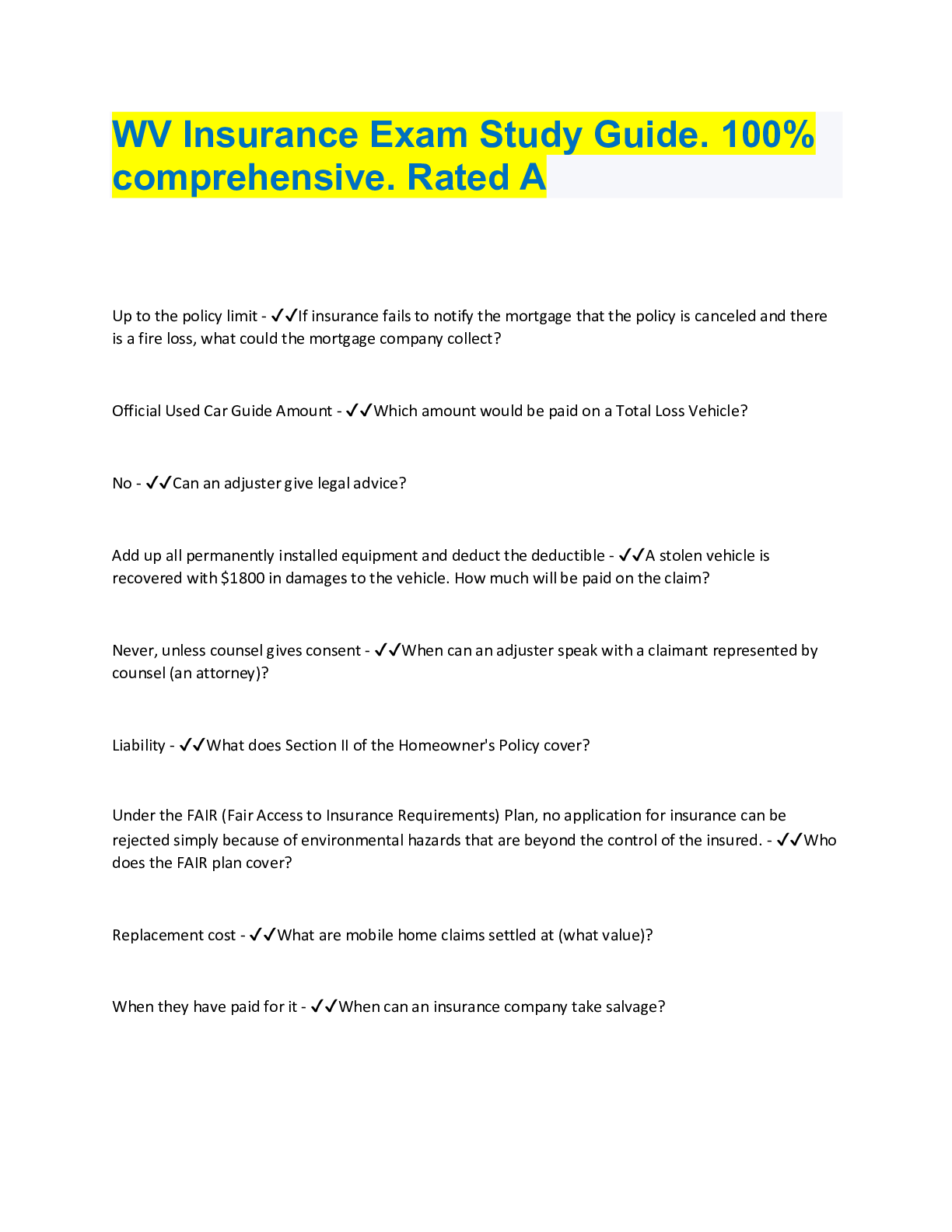





.png)

.png)

